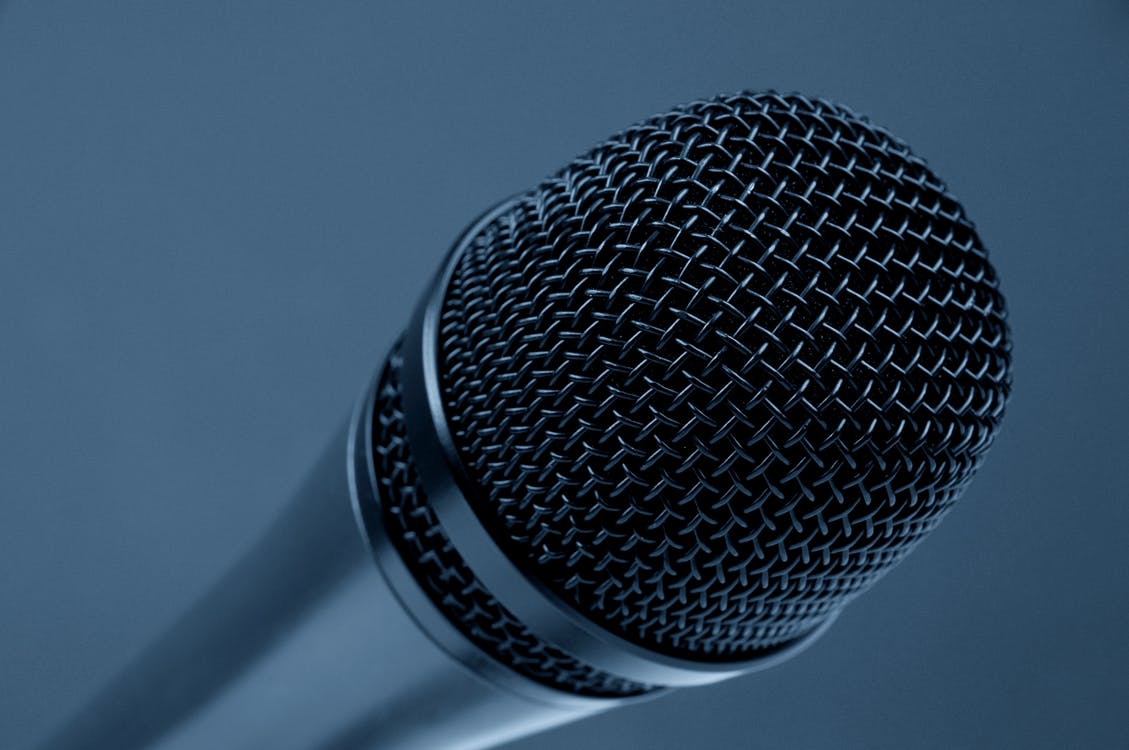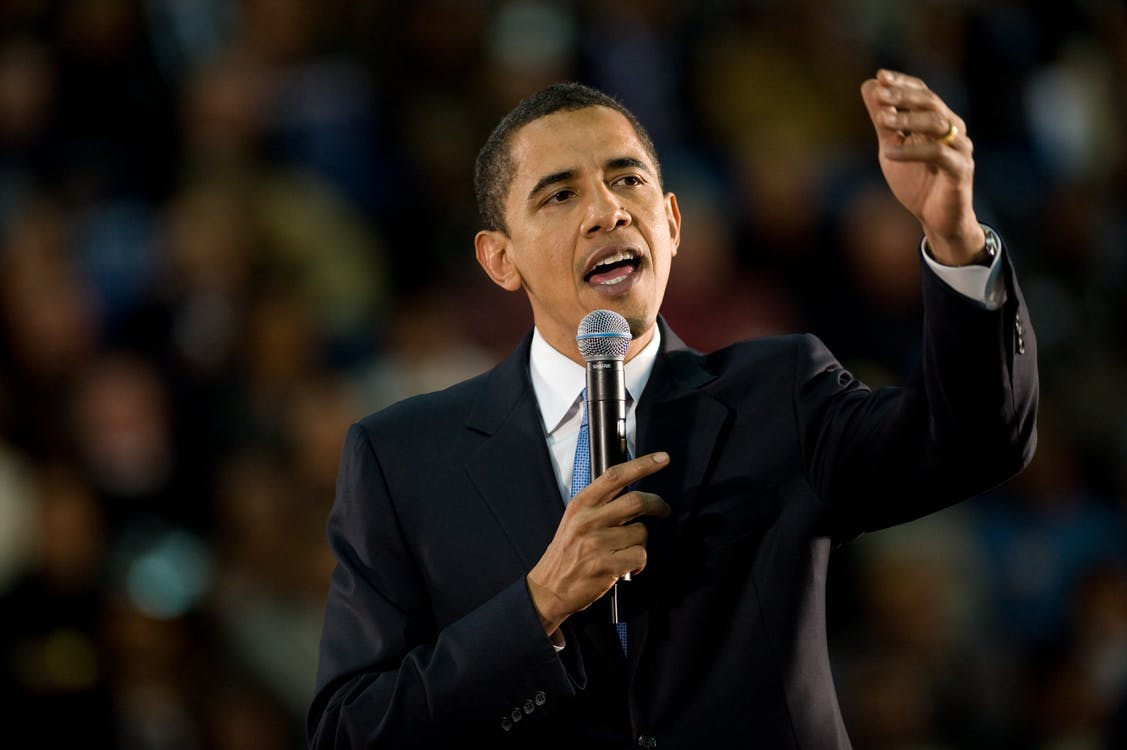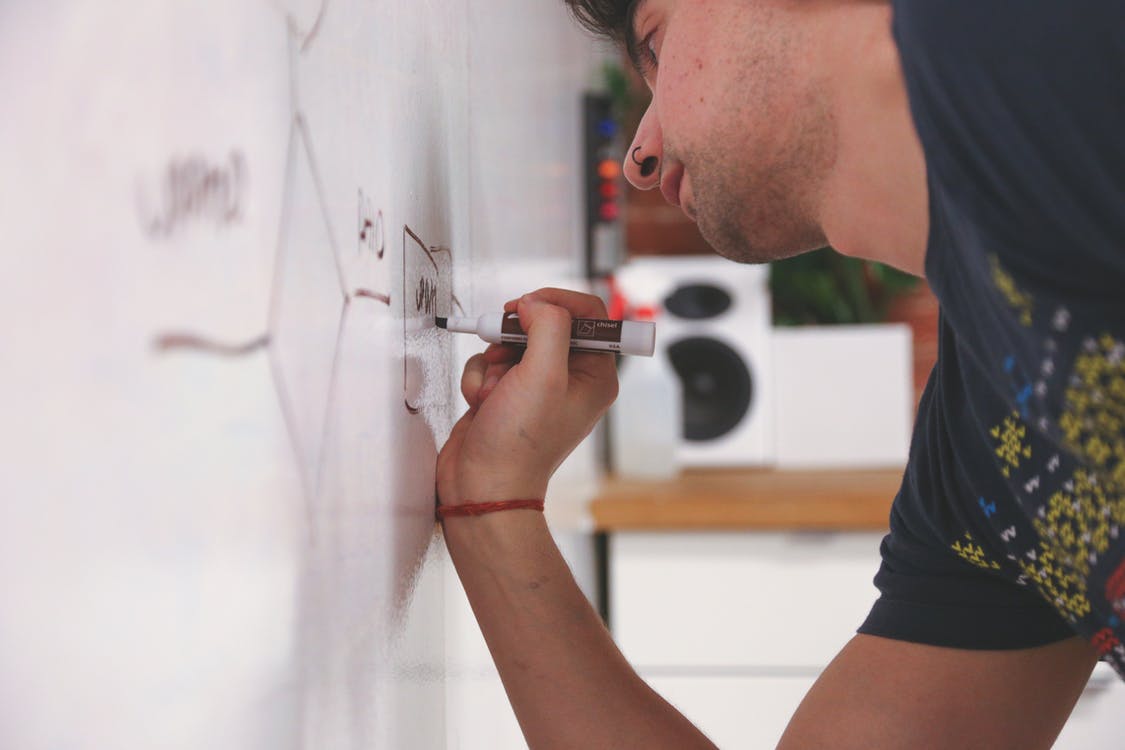![How To Deal With Sensory Overload [9 Tips For Overstimulation]](https://happyrubin.com/wp-content/uploads/2019/12/ik-ben-overprikkeld-150x150.jpg)
How To Structure Your Presentation: 31 steps – perfect workshop!

Are you going to give a presentation or a workshop / training? Use these 31 steps for all the ingredients of a strong presentation structure. Then you will have a fine structure of your presentation. Read along and use the extended model with the 31 steps.
Contents of this page:
Extensive structure of giving a presentation (or a workshop / training)
Below you will find an extensive model for the structure of your presentation.
1. Research your audience to find opportunities for connection and humor
- The more information you gather about your audience in advance, the more you can respond to their habits, familiar words, famous people, famous events, running jokes, inside jokes, etc.
2. Come early to make some arrangements
- Inform the public in advance, such as what they are called or what they call their customers and other jargon.
- Check the microphones, stage height, light and all other AV equipment.
- In the meantime, you shake hands with as many people as possible from the audience.
- Do not stay in one place for too long, but circulate quickly through the room. The goal is to make friends, because we laugh more easily with friends than with strangers.
- Have people stand or sit close together, and if necessary find a smaller space if there are many empty spaces.
3. Put on music for the presentation if necessary
- Start right at the end of the song.
4. Introduction by someone else

- For group presentations, have someone who is already familiar with the client introduce you. Tell the presenter that he should introduce you with a reason why you are the right person.
5. Welcome / rapport building before it has officially started
- Sit among the audience instead of on the lead position (the stage). This way you say that you are equal to them and that way there is room for rapport.
- Talk to people in the audience, introduce yourself, shake hands, ask some questions about them, what they do and their interests, and why they are here.
- If you succeed, you will welcome everyone and visit everyone personally. ‘Nice to have you here. Welcome.’
- When you go down an attendance list, you can take a moment to look at and smile at the student while you are saying a particular name. Keep that up until you get a smile back.
- As an NLP trainer once said: “First I connected with the audience, looked at everyone and sent energy with my gut to the audience (and I thought, I love you).”
- Make that connection first! Feel the group. Is it an energetic group? For example, immediately say hi cheerfully and spontaneously and dive straight into the experience of these people.
- Do not start directly with the content of your training, but first make a real group report by, for example, asking what the group just did, what the journey was like here, where they were today before they came here and how they are doing.
- Also ask some closed questions to get the public to raise their hands: who has already taken a tour of the museum? Who still has to? This way you can immediately see who is participating enthusiastically and who is not.
6. Props
(This is still before you even started!)
- If necessary, bring objects in a brightly colored briefcase / crate / bag at the beginning to grab the attention. “What’s in it, what’s in it!”
- Play with your props before you start.
- Maybe throw it at someone in the audience.
7. Addressing
- The first thing you say is always addressed to the host, hostess, or person who introduced you. This is already possible with a simple: ‘Mr or Mrs toastmaster’.
- Then you start to address the audience, for example with:
‘Ladies and gentlemen,’ - It is powerful to let a silence fall after this salutation. Incidentally, use silences to catch your breath or to drink a sip of water. This is good for your voice and serves as a powerful relaxation moment.
8. Special beginning

- Banging opening: shock, funny.
- Mysterious beginning: riddle / mysterious object.
- Most recommended: start with a metaphor!
- We are not going to be very exciting today … ‘
- ‘Did you know that…’
- Or introduce the one idea that your presentation is about: “At the end of this presentation, you know how to {benefit}”
The best thing is that everything leads to 1 big idea that the audience can think about when it goes home. - Explain why it is important to you and the audience. In what ways is this related to the audience? For example: ‘It has a lot of influence on your company.
- Start quickly and dynamically. For example with shocking figures. Don’t start with humor. With a personal emotional story with your successes and failures.
- Curiosity: describing something but not revealing the name yet. Combine this with shock effect.
- Also announce it as ‘very special’, plus explain why.
9. Or start quietly: ‘Good morning …’ (Connect with the group and then lead to your program)
By this part we mean that you will make a report with the group. You following so first:
- If your training consists of several days, take a moment at the start of each day to ask how people are doing. Take the time for this so that they can let themselves go and so that you can follow the group in what is going on in the group. ‘And how are we this morning? Slept well? Got interesting dreams, ideas, realizations? Any need to comment on it? ‘
- Ask the group questions about what they were doing just before they came to you. ‘How was the journey?’ “Where were you from this morning?” When the workshop takes place in a museum: ‘Have you been able to look around the museum yet?’
- If someone tells you something special, keep asking. “I just came from a workshop Tantric Chocolate Cake Eating.” For example, ask, “And what was that experience like?” So feel free to respond.
- Speak with a clear volume: rapport can only arise when you are audible to the group.
- You also have rapport with your audience if you mirror their facial expressions.
- Especially match and mirror the unconscious leaders of the group. This automatically creates a report with the entire group.
After you’ve followed the group enough, you can then continue to lead to get started on the program. You can do that with the Yes set, for example:
- ‘Here we are all together, we all have coffee and tea and we are expecting what this day will bring us. Let’s have a nice day together. ‘
- Yes sets: “So everyone is here today, and it’s a beautiful day, and you’ve all brought your book, and you’re ready to start learning.”
10. Introduce yourself
There are also different styles for this. One of the styles that always works very well is adding personal details about yourself: where you live, who you live with, what your hobbies are, etc. because that’s how you set a good example for the audience if you want them also be open and start sharing a lot.
11. Link to previous speaker

- Briefly discuss what the previous speaker talked about and link it to your topic.
12. Briefly mention the ‘what’
- To clarify the subject, you can already introduce the ‘what’ at the beginning.
13. Explain the structure: lay down the frame
- It is important to explain the structure: tell em what you gonna tell em, tell em, tell em what you told em.
- Say clearly: “What are we all going to do.”
- For example: ‘There are 3 things I am going to talk about / 3 discoveries that can help you
(Also clearly indicate the beginning and end of those parts during your presentation: clear transition) - An example of a structure is:
1. Outline the status quo.
2. Tell how it should be.
3. Compare the two. Make the gap as big as possible: “Here is the past and present, and look, there is the future.”
4. Constantly jump between the two during your presentation. Because you have to use the current status quo / resistance as the wind for a sailing boat: then it will be stronger! - You can use this moment to put a framework in place, so that you can defend the framework later when things go differently than planned. For example, you can tell when the times are to ask questions.
- Enter your ‘rules of the game’. This is crucial because it manipulates the atmosphere. You can do this smartly, for example, by establishing the rule that everyone actively participates and is open to new experiences. You can also place the ‘discovery framework’ in the rules of the game: ‘Feel free to do it differently than the assignment was: rules are there to be broken. Come to your own discoveries. ‘
- This is also the time to introduce the get-bring principle: ‘If you come and get it alone, I won’t bring you anything. Fair though. ‘
- Also, be sure to encourage participants to ask for and provide plenty of feedback , and especially to do so in a timely manner. ‘If you only say what could be improved at the end of the training, there is little we can do about it for you.’
We are a. I was not the teacher if there were no students. I have something very special that you should pay attention to, “so I am the teacher, the inner group and you the outer group.” I know damn well I can’t be the teacher unless you come. Thus my status is completely and positively completely dependent on you. These are not things that I have first that you will get. These things arise together and reciprocally. If you didn’t come, I wouldn’t be talking. I don’t know what to say because I borrowed your language. My status as a teacher depends entirely on you.
– Alan Watts
14. The why
- Why and with what do you want to inspire the audience?
- “If I gave you a tool that allows you to easily and powerfully create consensus anywhere at work and home, would that be of interest to you?”
- “Could it be valuable for you … to learn?”
15. Having the goal clear
- tell (or rather ask) what the goal is: learning.
16. Personal goals
- This is part of the ‘why’. Have SMART written down per person.
- From the second time you ask, “Where have we gone and where are we going?”
17. Ice breaker
- Soon we will link here to a page with real NLP icebreakers.
18. Set expectations and intention

- Ask the audience what it expects. So put an intention with the group.
- Also set the framework that you are an accessible trainer, where independent research is encouraged:
‘Just a word of warning: don’t accept everything I say because I say it, because it won’t do you any good. You’ve probably taken things from others indiscriminately, but don’t take anything from me at all. Analyze my words, the way a goldsmith analyzes gold: by rubbing, scraping, cutting, melting … So be open and receptive on the one hand, but also be willing to investigate for yourself on the other. Otherwise it’s a kind of laziness, and we don’t want that. ‘
19. Feedback
You can do this during the first lesson and the following lessons.
- First lesson: What do you already know about this topic? What does this remind you of? Discuss with each other what the method is for you, what appeals to you (or not) and how you think you can apply it in your life.
- Later in the training: Ask for personal experiences from the past week: what have you done that tells you it works?
- Analysis: making connections between previous lessons.
- Making connections: for example, having the audience write down with sticky notes how the learned topics are connected.
20. Giving knowledge: the ‘what’
- Provide the necessary knowledge. Do this with as many tools as possible that stimulate all senses.
- For example, invite the group to come forward and stand around the flipchart.
21. ‘Concrete practice’: the ‘how’
- Demo.
- Practical exercise.
22. Examples (and always ask for counter-examples)
- These are some examples …
- Who does this not apply to? Indeed, not for everyone.
23. What if (questions)
- This is a very important part. The public must be given the opportunity to ask all its questions.
- You ask the following questions to the audience:
What questions do you have? (Wow, no questions, that’s either good news or bad news)
What have you learned?
What do we need to know?
What can you do with this? This question can possibly be discussed in groups. - Tell the audience how long they have for questions.
- After answering, ask, “Did I answer your question correctly?”
24. Homework

- Give up homework.
- Have two participants who don’t know each other exchange email addresses to check if they are doing the homework or possibly to practice with each other.
Tip: creativity, such as poems, is a good way to process homework unconsciously. A nice example of homework is:
- Have your group read a poem out loud at home. This is preceded by sitting in a quiet place and breathing. After reading the poem, you don’t analyze it, otherwise you push it through the filter of the conscious brain. If you then read the poem again, it wouldn’t affect you anymore.
25. Summary
- Tell them what you told them (Tell em what you told em).
26. Conclusions
- The conclusion is often the Call To Action: the action they have to take. Ask them to do it right on the spot after the presentation. Repeat the bigger reason, the ‘why’.
- Develop the ability to tell last what you want the audience to remember best.
- Or end with something they can think about, such as a statistic.
27. Generalizing to the future: what have you learned?
How are you going to use the material in your life / profession?
As you make your way to a chair that is most comfortable for you ( pacing ), I invite you to think back about this morning, and note which experiences were most important to you, stood out, and what you want to keep it, remember it, and carry it forward in the future to use.
Use the following template:
- What have you learned, what have you discovered?
- Choose the most important.
- Find a place / time in your future
- Apply (future pace)
- Connecting with the personal goal: ‘What is what you want to learn, know, what you want to create, achieve, what you want to make possible for yourself and your family / do what is important to you?’ “Do you think knowledge is important?”
- It’s good to be curious because you start to wonder, “How can I apply this material?”
28. Close your metaphors (your unfinished stories)

Have you used metaphors? Now let them all come to a happy end.
29. Evaluation / Affective / Reflection
Read the article about reflecting for all the parts you can insert here. You can also choose to take a quiz / test about what you have taught your audience. If you are taking a written test, it is important that the answers are legible. Participants who are doctors, now is not the time for that. Participants who want to become a doctor, now is not the time.
30. Conclusion
- Turn to the host or presenter again: “Mr. or Mrs. Toastmaster.”
- Enjoy the applause.
31. Introduce the next speaker and ask for a round of applause for that person
- After you receive your own applause, it’s time to ring in the applause for the next speaker.
- ‘Let’s give a round of applause to … That deserves appreciation! Let’s give him a round of applause. ‘
- And guess who the last round of applause is for: yourself!
Continue reading about well-structured presentations
Will you learn the official guide to the TED method? Then purchase the TED method to structure your presentation as TED. Would you rather just know the nine most important principles of a good presentation? Then go for ‘Speak like TED’.
Good luck with the structure and structure of your presentation
This was the complete guide to the structure of your presentation. Let us know in the comments how you use it to build your presentation!

![5 Best Self Care Tips For College Students [#1 Advice]](https://happyrubin.com/wp-content/uploads/2021/09/the-best-self-care-tips-for-college-students-440x264.jpg)
![How To Stick To New Year’s Resolutions: 9 Tips [Smart & Sure Ways]](https://happyrubin.com/wp-content/uploads/2019/12/tips-voor-goede-voornemens-440x264.jpg)
![How To Stop Being So Hard On Yourself [9 Great Tips]](https://happyrubin.com/wp-content/uploads/2019/12/we-moeten-zoveel-van-onszelf-en-anderen-150x150.jpg)

![19 Best Ice Breaker & Get-To-Know-Eachother Games [Fun & Simple]](https://happyrubin.com/wp-content/uploads/2018/02/leukste-ijsbrekers.jpeg)
![Becoming More Social: 41 Tips [Improving Social Skills] [List]](https://happyrubin.com/wp-content/uploads/2018/06/sociale-vaardigheden1.jpeg)
![How to start a conversation with anyone: 15 tips [Making contact]](https://happyrubin.com/wp-content/uploads/2017/08/gesprekstechnieken1.jpeg)
![372 Friend Tag Q&A Questions [Best Friend Quiz]](https://happyrubin.com/wp-content/uploads/2019/05/best-friend-tag-vragen-voorbeelden.jpg)



![Clingy & controlling behavior of partner/date [Extreme examples]](https://happyrubin.com/wp-content/uploads/2020/06/claimerig-gedrag-van-partner-eigenschappen-en-voorbeelden-150x150.jpg)

![How to recognize if a man is in love [Signals & his body language]](https://happyrubin.com/wp-content/uploads/2020/05/verliefd-gedrag-van-mannen-herkennen-150x150.jpg)


![Free will and religion / theology [Verses & Quotes on free will]](https://happyrubin.com/wp-content/uploads/2020/10/religion-on-free-will-quotes-1050x640-1-150x150.jpg)

![Dealing With Setbacks & Hardship [Lessons & Examples]](https://happyrubin.com/wp-content/uploads/2018/11/omgaan-met-tegenslag-tips-hoe-dan.jpeg)
![NLP Agreement Frame: Use these exact sentences [Examples]](https://happyrubin.com/wp-content/uploads/2020/10/agreement-frame-nlp-1125x640-1-440x264.jpeg)
![122 Best Comebacks In Any Situation [Best Examples]](https://happyrubin.com/wp-content/uploads/2020/06/beste-comebacks-technieken-tips-440x264.jpg)
![Using Hypnosis to Stop Smoking [HowTo]](https://happyrubin.com/wp-content/uploads/2020/05/stoppen-met-roken-door-hypnose-150x150.jpg)
![Presuppositions language pattern: meaning & examples [NLP]](https://happyrubin.com/wp-content/uploads/2020/04/wat-zijn-vooronderstellingen-150x150.jpg)
![Peripheral Vision: Meaning & Exercise [Essential Skill]](https://happyrubin.com/wp-content/uploads/2020/04/perifeer-zicht-trainen-tips-150x150.jpg)

![How To Start A Coaching Business [21 Smart Tips]](https://happyrubin.com/wp-content/uploads/2018/11/coachingpraktijk-starten-tips.jpeg)
![How to make dreams come true? [33 tips to realize dreams 100%]](https://happyrubin.com/wp-content/uploads/2018/05/dromen-mijlpalen.jpeg)
![How To Become Rich? 27 Millionaire Tips [Guaranteed To Work]](https://happyrubin.com/wp-content/uploads/2018/01/hoe-kan-ik-rijk-worden.jpeg)
![77 Best Online Marketing Tools [Recommendations] [Also Free]](https://happyrubin.com/wp-content/uploads/2018/08/beste-onlne-marketing-tools-tips.jpeg)
![Complete List Of Virtues & Qualities [Including Explanation]](https://happyrubin.com/wp-content/uploads/2018/12/kernkwaliteiten-uitleg.jpeg)
![Being Attentive: How Do You Do That? [Meaning & 9 Tips]](https://happyrubin.com/wp-content/uploads/2019/05/attent-zijn.jpg)
![Being Conscientious: Meaning Of This Virtue [Explained]](https://happyrubin.com/wp-content/uploads/2018/07/Consciëntieus-persoon.jpg)


![Best Books About Burn-Out [Top 10] [Update 2025]](https://happyrubin.com/wp-content/uploads/2020/06/beste-boeken-over-burnout-lijst-440x264.jpg)
![Best Self-love Books [Top 10] [Update 2025]](https://happyrubin.com/wp-content/uploads/2020/04/beste-boeken-over-zelfliefde-aanraders-440x264.jpg)
![Life changing books: 10 books that change your life [2025 Update]](https://happyrubin.com/wp-content/uploads/2020/03/levensveranderende-boeken-tips-150x150.jpg)
![Top 10 Best Books: Recommendations Per Genre [2025 Update]](https://happyrubin.com/wp-content/uploads/2019/12/best-books-per-genre-150x150.png)
![Best Books On procrastination: Must Reads [List] [2025 Update]](https://happyrubin.com/wp-content/uploads/2019/11/beste-boeken-over-uitstelgedrag-tips-150x150.jpg)
![Joe Dispenza: Events To Attend [2025 & 2026] [All Info]](https://happyrubin.com/wp-content/uploads/2020/02/joe-dispenxa-events-440x264.png)
![Best Online Study Options [Online Education Top List]](https://happyrubin.com/wp-content/uploads/2019/03/best-home-study-options-440x264.png)
![Teachable Review & Experiences 2025 [Bad Online Training Tool?]](https://happyrubin.com/wp-content/uploads/2020/02/Teachable-review-ervaringen-150x150.png)
![Audible Review, Experiences & Special Discount [Scam?]](https://happyrubin.com/wp-content/uploads/2020/01/audible-review-ervaringen-150x150.png)
![Guest Posts Wanted [Free & Always Directly Accepted]](https://happyrubin.com/wp-content/uploads/2019/05/gastbloggen-regels.jpg)
